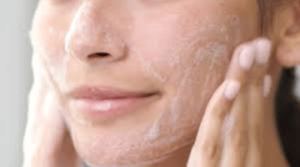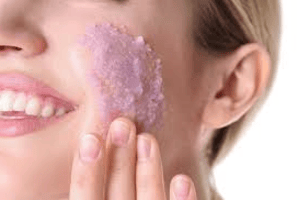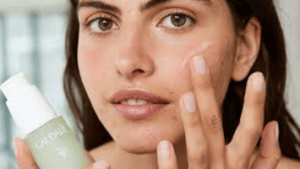Having oily skin can feel like a constant battle against shine, enlarged pores, and breakouts. If you’ve been searching for the perfect skincare routine for oily skin, you’re not alone.
Millions of people worldwide deal with excess sebum production, especially during warmer months or hormonal fluctuations. The good news? With the right approach and products, you can transform your oily skin from a frustration into a glowing, balanced complexion.
This comprehensive guide will dive deep into understanding oily skin, its causes, and most importantly, how to create an effective skincare routine for oily skin that actually works.

Understanding Oily Skin
Before jumping into your skincare routine, it’s important to understand what causes oily skin in the first place. Our skin naturally produces an oil called sebum through the sebaceous glands.
This oil is vital for keeping our skin moisturized and protected. However, when these glands produce too much sebum, the result is what we recognize as oily skin.
Several factors can trigger excessive sebum production:
- Genetics have a big impact on what becomes your skin type.
- Hormonal fluctuations often increase oil production, especially during puberty, menstruation, pregnancy, and stress
- Climate and humidity can stimulate oil glands to work overtime
- Incorrect skincare products that strip the skin can ironically cause more oil production
- Diet and lifestyle factors including high glycemic foods and lack of sleep
Many people with oily skin make the mistake of trying to eliminate all oil using harsh, stripping products. This approach actually backfires because when you strip your skin of its natural oils, it responds by producing even more oil to compensate!
The key to a successful skincare routine for oily skin is balance – controlling excess oil while maintaining proper hydration.
Morning Skincare Routine for Oily Skin
Your morning routine sets the tone for how your skin will behave throughout the day. Here’s how to get your day started correctly, step-by-step:
Step 1: Cleanse Gently Yet Thoroughly
Start with a mild cleanser made especially for oily skin.

Look for ingredients like:
- Salicylic acid to penetrate and clean pores
- Tea tree oil due to its inherent antimicrobial qualities
- Niacinamide to regulate sebum production
- Glycolic acid for mild exfoliation
Apply the cleanser to damp skin, massage in circular motions for 60 seconds, and rinse with lukewarm water. Hot water can stimulate oil production, so keep it tepid!
Step 2: Tone to Balance
Contrary to popular belief, toners aren’t meant to strip your skin. For oily skin, a good toner should:
- Remove any residual impurities after cleansing
- Balance your skin’s pH level
- Get your skin ready to absorb products more effectively.
Look for alcohol-free formulations containing witch hazel, green tea extract, or rose water. Apply with a cotton pad or your fingertips, gently patting into the skin until absorbed.
 Step 3: Treat With Active Ingredients
Step 3: Treat With Active Ingredients
Morning is ideal for applying lightweight serums containing ingredients that control oil throughout the day:
- Niacinamide (vitamin B3) helps regulate oil production and minimize pores
- Hyaluronic acid provides oil-free hydration
- Vitamin C protects against free radicals and makes skin more radiant.
- Zinc helps control sebum and soothes inflammation
Apply just 2-3 drops of serum to your entire face, gently pressing into the skin rather than rubbing.
Step 4: Moisturize – Yes, Even Oily Skin Needs This
One of the biggest myths about oily skin is that you should skip moisturizer. This is absolutely false! When you don’t moisturize, your skin senses dehydration and produces more oil to compensate.
Select a non-comedogenic, oil-free, lightweight moisturizer like:
- Gel-based formulations
- Water-based lotions
- Products labeled ‘mattifying’ or ‘oil-control’
Look for ingredients like hyaluronic acid, glycerin, and squalane, which hydrate without adding oil.
Step 5: Sun Protection – Non-Negotiable
All skin types, even oily ones, need sunscreen. UV damage can worsen many skin concerns and even increase oil production over time. For oily skin, choose:
- Oil-free, mattifying sunscreens
- Gel or liquid formulations
- Mineral sunscreens with zinc oxide (which also has oil-controlling properties)
- Minimum SPF 30, broad-spectrum protection
Apply liberally and reapply every two hours when outdoors.

Evening Skincare Routine for Oily Skin
Nighttime is when your skin recovers and repairs itself, making your evening skincare routine for oily skin particularly important:
Step 1: Double Cleanse
After a day of collecting oil, sweat, and environmental pollutants, a single cleanse often isn’t enough. The double cleansing method involves:
First cleanse: Use a micellar water or cleansing oil (yes, oil cleanses oil effectively!) to remove makeup, sunscreen, and surface grime.
Second cleanse: Follow with your regular facial cleanser to deep clean the pores.
This approach ensures you’re starting with truly clean skin without over-stripping.
Step 2: Exfoliate (2-3 Times Weekly)
Regular exfoliation is crucial for oily skin to prevent clogged pores and buildup. However, over-exfoliation can damage your skin barrier. Aim for 2-3 times per week using either:
- Chemical exfoliants:
BHA (salicylic acid) is particularly effective for oily skin as it’s oil-soluble and can penetrate deep into pores. AHAs like glycolic acid work well too.
- Enzyme exfoliants:
Papain (from papaya) or bromelain (from pineapple) offer gentler exfoliation.
Avoid harsh physical scrubs with irregular particles that can create micro-tears in the skin.
Step 3: Tone
Use the same balanced toner from your morning routine to restore pH and prep for treatments.
 Step 4: Treatment Products
Step 4: Treatment Products
Nighttime is perfect for more intensive treatments:
- Retinol or retinoids help regulate cell turnover, prevent clogged pores, and reduce the appearance of large pores (start with a low percentage and use only 2-3 times weekly to build tolerance)
- AHA/BHA serums (on nights when you’re not using retinol)
- Clay or sulfur masks 1-2 times weekly to draw out impurities
Step 5: Moisturize
Even at night, oily skin benefits from lightweight hydration. Consider:
- Gel moisturizers with hydrating ingredients
- Products containing ceramides to support your skin barrier
- Lightweight facial oils like squalane (counterintuitive, but some lightweight oils can actually help balance sebum production)

Weekly Treatments for Oily Skin
Incorporating weekly treatments into your skincare routine for oily skin can provide deeper care:
Clay Masks
Clay masks are particularly beneficial for oily skin as they:
- Draw excess oil from the skin
- Reduce the appearance of pores
- Cleanse deeper than daily face wash
Bentonite, kaolin, and French green clay are excellent options. Apply a thin layer to clean skin, let dry until tacky (not completely dry and cracking), then rinse thoroughly.
Once weekly is sufficient for most people.
Hydrating Masks
Balance oil-absorbing treatments with hydration. Look for gel-based hydrating masks containing:
- Hyaluronic acid
- Aloe vera
- Cucumber extract
- Glycerin
This prevents your skin from overcompensating with more oil production.
Diet and Lifestyle Factors for Managing Oily Skin
Your skincare routine for oily skin extends beyond products. Consider these lifestyle adjustments:
Dietary Considerations
- Reduce high-glycemic foods like white bread, sugary snacks, and processed foods, which can trigger insulin spikes that increase sebum production
- Increase omega-3 fatty acids from sources like fatty fish, flaxseeds, and walnuts to help regulate oil production
- Make sure to drink at least 12 cups of water throughout the day to stay hydrated
- Consume zinc-rich foods like pumpkin seeds, oysters, and lean meats, as zinc helps regulate sebum
Stress Management
Hormonal changes brought on by stress may result in an increase in oil production. Incorporate stress-reduction practices like:
- Regular exercise
- Adequate sleep (7-9 hours nightly)
- Meditation or breathing exercises
- Yoga or tai chi
 Regular Face Washing
Regular Face Washing
Washing the face twice a day is okay. Over-washing stimulates more oil production.
Instead:
- Use oil-absorbing sheets to blot excess oil throughout the day
- Apply a mattifying powder if needed
- Avoid touching your face, which transfers oils and bacteria
Errors to Avoid in Your Oily Skincare Routine
Even with the best intentions, many people make these common mistakes:
- Using alcohol-heavy products that strip the skin
- Skipping moisturizer under the misconception that it causes more oil
- Over-exfoliating, which damages the skin barrier
- Using pore strips regularly, which can enlarge pores over time
- Layering too many active ingredients at once, causing irritation
- Not giving products enough time to show results
Seasonal Adjustments to Your Skincare Routine for Oily Skin
Your skin’s needs change with the seasons:
Summer Adjustments
- Switch to even lighter formulations
- Consider using a mattifying primer before makeup
- Increase focus on sun protection
- Keep blotting papers handy
Winter Adjustments
- Incorporate slightly richer hydration
- Focus on barrier support ingredients
- Consider adding a humidifier to your environment
- Continue exfoliating but perhaps reduce frequency
FAQs
If I have oily skin, which ingredients should I stay away from?
Heavy, occlusive ingredients like petroleum jelly, mineral oil, and silicones can trap sebum and exacerbate oiliness. Also avoid products containing alcohol denat, SD alcohol, and isopropyl alcohol as main ingredients, as these can strip your skin and trigger more oil production.
Be cautious with coconut oil, lanolin, and shea butter, which may be too heavy for oily complexions.
How often should I exfoliate oily skin?
Oily skin benefits from regular exfoliation, but moderation is key. Most dermatologists recommend exfoliating 2-3 times per week with chemical exfoliants like salicylic acid or glycolic acid.
Over-exfoliation can damage your skin barrier and paradoxically increase oil production. Start with once weekly and gradually increase as your skin tolerates it.
Is it true that oily skin ages better?
There is some truth to this! The natural oils in your skin can provide some protection against fine lines and wrinkles, as they help maintain skin’s moisture barrier. However, this doesn’t mean you should skip sun protection, which is the primary cause of premature aging.
Embrace your oily skin as potentially beneficial for long-term youthfulness while managing excess oil day-to-day.
Can my diet affect how oily my skin is?
Absolutely. High glycemic foods (refined carbohydrates, sugary snacks) can trigger insulin spikes that increase sebum production. Dairy products may also increase oil production in some individuals due to hormonal components.
Focus on incorporating anti-inflammatory foods like fatty fish, leafy greens, berries, and nuts, which may help regulate oil production and improve overall skin health.
Will drinking more water reduce my skin’s oiliness?
While staying hydrated is essential for overall skin health, drinking water alone won’t directly reduce oil production. However, proper hydration helps maintain your skin’s moisture balance, potentially preventing the dehydration that can trigger excess oil production.
Aim for at least 8 glasses daily, but understand that managing oily skin requires a comprehensive approach beyond water intake.
Should I use different products in the morning versus night for oily skin?
Yes, differentiating your morning and evening routines can be beneficial. Mornings should focus on oil control and protection with lightweight, mattifying products and sun protection.
Evenings are ideal for deeper treatments, gentle exfoliation, and repair with ingredients like retinoids, BHAs, and niacinamide. Your skin also has different needs at different times of day—protection during daytime, repair at night.
How long until I see results from my new skincare routine for oily skin?
Patience is key with any skincare routine. For basic oil control, you might notice improvements within a week. For concerns like pore size, texture, and breakouts, expect to wait 4-6 weeks (the time it takes for full cell turnover).
More significant changes may take 2-3 months as your skin adjusts to new products. Consistency is crucial—stick with your routine long enough to fairly evaluate results.
Conclusion…
Creating an effective skincare routine for oily skin is about balance, consistency, and understanding your unique skin. Remember that oily skin has its advantages—it often develops fewer wrinkles and maintains a natural glow that many people try to achieve artificially!
The key is finding products and habits that help you manage excess oil without stripping your skin of its natural moisture. Your perfect skincare routine for oily skin might take some experimentation to discover, but the results—balanced, clear, glowing skin—are well worth the journey.
Be patient with your skin, and adjust your routine as needed based on seasonal changes, hormonal fluctuations, and your skin’s response. With consistent care and the right approach, oily skin can transform from a daily struggle into your beauty advantage.
Remember that skin health is also a reflection of overall health—staying hydrated, eating well, managing stress, and getting adequate sleep all contribute to a balanced complexion.



